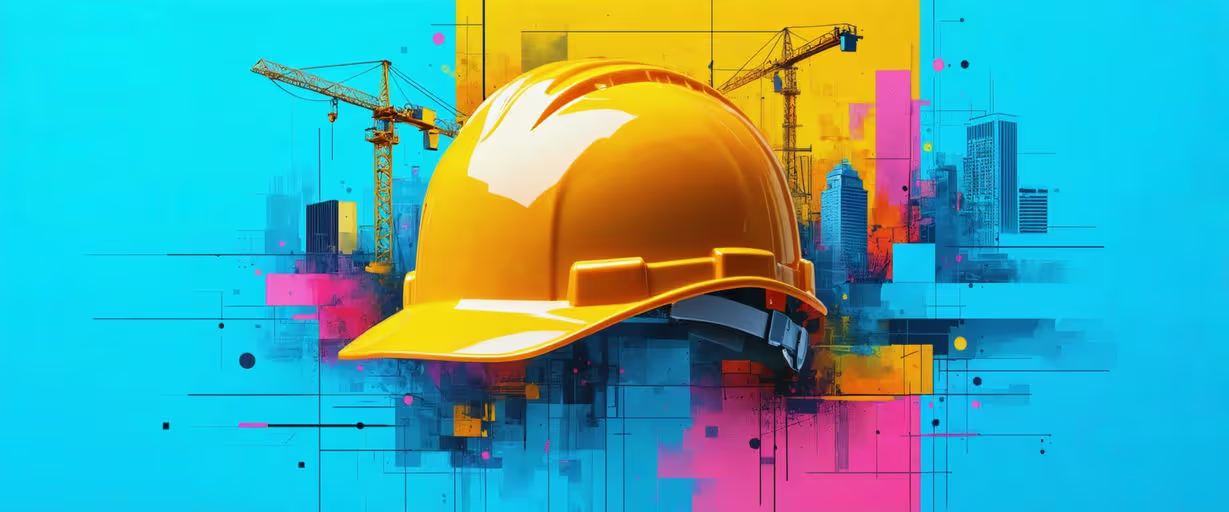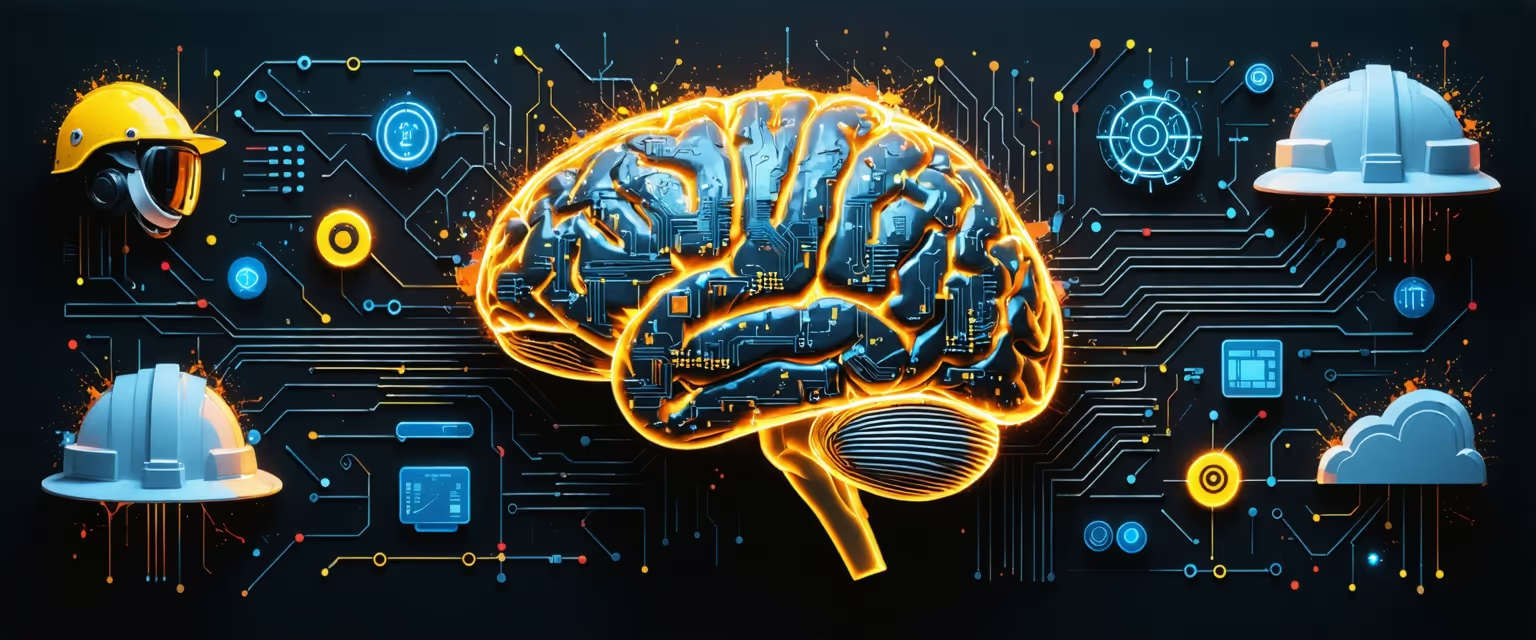All Posts
Construction - AI-Powered Construction Safety & Compliance
How AI Automates Safety Compliance Audits for Enhanced Construction Efficiency

Discover how AI automates safety audits in construction, enhancing compliance, reducing errors, and speeding up data analysis for safer, more efficient sites.
Manual safety compliance in construction overwhelms teams with endless paperwork, constantly changing regulations, and the risk of costly errors. Many organizations spend excessive time juggling data from multiple sources, leading to inefficiencies and missed hazards.
The key problem is the manual handling of compliance data, which is time-consuming and prone to mistakes. That's where AI comes in. In this article, we'll explore how AI automates safety compliance audits in construction, offering a targeted solution by automating exhaustive checks, integrating data seamlessly, and reducing the compliance burden.
If you're ready to transform your compliance process and focus on what truly matters—keeping your team safe—read on to learn how to streamline your operations.
Traditional Safety Compliance Audits in Construction
Traditional safety compliance audits in construction hinge on inspections, manual data reviews, and checks against regulatory standards. Inspectors conduct physical walkthroughs of worksites to spot hazards and confirm safety measures are in place—everything from equipment checks to safety signage. While essential, these inspections can consume significant time and may still overlook certain issues.
Manual data reviews involve digging into training records, written programs, and incident reports to see if they align with industry mandates. Auditors compare documentation against specific rules, searching for inconsistencies or gaps. With the sheer volume of paperwork, human oversight becomes inevitable, slowing responses to urgent safety risks.
Compliance checks compare organizational practices with standards from groups like OSHA. They reveal where procedures fall short but require a substantial investment of resources. Without real-time data, organizations often miss emerging hazards between audits.
AI-Powered Safety Compliance Audits
AI-powered safety compliance audits in construction aim for the same goals as traditional audits—spotting hazards and enforcing standards—but utilize tools that handle data more efficiently. AI systems can:
- Automate compliance monitoring by drawing data from IoT devices, smart sensors, and automated imaging tools.
- Capture ongoing information about workplace conditions and feed it into algorithms in real time, delivering a live, data-rich snapshot of risks.
- Handle data analysis faster and sift through large sets of information, looking for patterns and hidden risks.
- Alert managers to hazards as soon as something goes off-track.
A key player in this shift is the AI agent: code that automates many audit steps, from data gathering to report generation. By offloading repetitive tasks, organizations free up human auditors for high-level decisions and strategic planning.
How AI Automates Safety Compliance Audits
AI offers a data-driven approach to safety compliance audits in construction, marked by automated data integration, data enrichment, real-time analysis, and predictive algorithms. Each element works together to streamline audits, automating workflows and enhancing visibility into potential risks.
AI systems first gather data from incident logs, maintenance records, and operational reports. Through data validation automation, they "clean" that data so it's usable for automated checks. Better data quality leads to clearer insights. Once integrated with an organization’s existing compliance setup, these AI tools monitor new information flowing in.
Real-time analysis is where AI agents excel. They keep an eye on conditions around the clock, catching deviations from safety norms as they happen. This immediacy shortens the gap between spotting a hazard and taking action.
Predictive algorithms build on past data to anticipate where a breach might occur. They look for trends that could point to future issues, helping organizations shift from reactive measures to preventive solutions. This kind of forecasting keeps costs down by minimizing major incidents.
AI agents also simplify risk identification by automating tasks like monitoring communications or scanning transactions for unusual patterns. They spot signals a human auditor might miss—a testament to the efficacy of AI agents in analysis, and one reason they're becoming staples in complex audits.
Lower labor overhead and earlier detection of potential fines or legal trouble both help the bottom line. Additionally, AI agents utilize AI in report writing, automating many audit steps from data gathering to report generation.
Enhancing Safety Protocols in Construction
AI anticipates hazards, checks for PPE compliance, and streamlines risk mitigation in construction. It sifts through vast data sets in real time, so teams can stay ahead of dangerous conditions.
AI also monitors PPE compliance by analyzing live video feeds. It flags instances where workers aren't wearing helmets or other required protective gear, then updates supervisors who can quickly address the situation.
Risk mitigation becomes more precise with proactive data. AI agents in research help to surface developing issues by processing historical information alongside real-time updates, prompting actions like machinery inspections or environmental checks before any disaster strikes.
Time Savings, Accuracy, and Reduced Human Error
AI-powered safety compliance audits in construction cut down on labor-intensive tasks, increasing speed and precision while reducing oversight risks, leading to greater efficiency in automation.
AI automates much of the processes by extracting data, generating reports, and performing automated document reviews, highlighting potential problems in near real time. AI can significantly reduce audit-related hours, translating to substantial cost savings for companies that conduct frequent audits.
Automated tools also boost accuracy. By scanning large datasets at high speed, AI systems pick up anomalies a person might overlook. AI can deliver more thorough planning and clearer reporting, improving the overall quality of an audit. This lowers the odds of expensive compliance lapses and lingering issues that put a company at risk.
AI is reshaping the construction landscape by boosting productivity and reducing delays. Advanced scheduling tools can quickly analyze countless delivery scenarios, refining timelines so projects stay on track with fewer bottlenecks. With real-time data, firms can allocate resources more effectively and encounter fewer unexpected slowdowns.
Adopting AI for Safety Compliance Audits in Construction
Integrating AI into a safety compliance framework in construction can present several challenges. First, there's the issue of integration. AI tools need accurate, organized data, and many companies must update or replace legacy systems before real progress can happen. This requires dedicated IT resources and can carry a hefty price tag. If data sources are fragmented, AI can't deliver the reliable insights companies expect.
Data privacy also demands attention. AI systems often handle sensitive information, so firms must ensure strong protection practices to comply with regulations such as GDPR and CCPA. That means having policies in place for data governance and access control.
Then there's the cost factor. Organizations might struggle to measure AI's financial return in the short run because it's not always easy to put a dollar figure on avoided fines or accidents.
Finally, resistance to change can stall adoption. Some employees worry AI will replace their roles or disrupt workflows. Overcoming that mindset requires clear communication about the benefits and robust training so everyone sees AI as a support tool, not a threat. Utilizing tools like AI proposal automation can help in planning and presenting the benefits of AI adoption to stakeholders.
How Agentic AI Simplifies Construction Task Automation
For construction project managers, endless paperwork and daily reporting can consume precious time. Datagrid's AI-powered platform aims to change that by connecting with essential tools like Procore, PlanGrid, and Autodesk BIM 360. Automated document workflows ensure you spend less time on clerical tasks and more time overseeing projects and maintaining solid client relationships.
Imagine automated flows for RFIs, submittals, change orders, and daily logs. High-volume tasks no longer need your constant attention. With agentic AI features, AI agents handle everything from scanning bid documents to comparing them against historical data. They even track different permit deadlines across unique jurisdictions, so you're less likely to get blindsided by last-minute requirements.
Datagrid also syncs with project management platforms like Microsoft Project or Primavera P6. That means real-time schedules and allocations update automatically, saving you from toggling between apps. On the finance side, integrations with Sage 300 or QuickBooks permit automatic cost tracking and budget forecasting.
Here's what it can automate:
- Document Management: Datagrid instantly processes RFIs, submittals, and change orders, pulling key information and sending it to the right team. Bottlenecks shrink as approvals move faster.
- Safety Compliance Audits: By linking to safety software, the system monitors incident reports and qualifications, sending alerts if something needs your attention.
- Progress Tracking: It compiles photos and schedule updates, then pinpoints potential delays before they impact the critical path.
- Communication: Ties into Slack or Microsoft Teams, so crucial updates on RFIs or safety issues reach the right people.
With task automation, management can concentrate on core responsibilities—executing successful builds, earning client trust, and steering the business in a competitive market.
Simplify Safety Compliance Audits with Agentic AI
Ready to revolutionize your construction project management with AI-powered automation? Datagrid is your solution for:
- Seamless integration across all major construction platforms (Procore, PlanGrid, BIM 360)
- AI-driven RFP analysis and bid management
- Automated submittal and change order processing
- Real-time project insights and schedule optimization
See how Datagrid can help you increase process efficiency.











